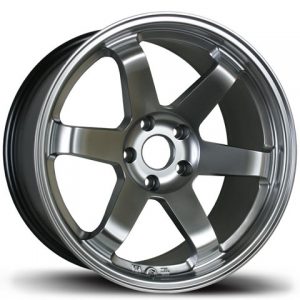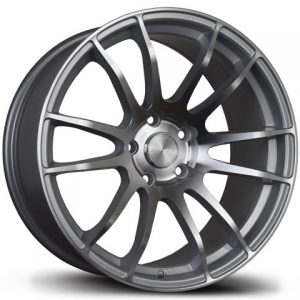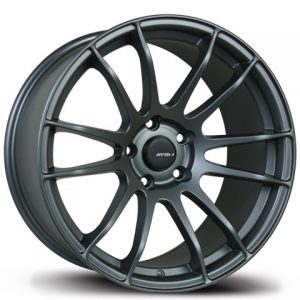AVID1 WHEELS
Avid.1 Wheels and Rims – Are you looking for the perfect way to express yourself and put your own unique stamp on your car?
Check out our great selection of trendy Avid 1 rims! Designed and manufactured with tuners and auto enthusiasts in mind, Avid 1 wheels feature bold, attention-grabbing looks and quality performance at a price that won’t break the bank.
Each wheel is made with a one-piece low-pressure cast method, resulting in lightweight rims that look great and perform well on both the track and the street.
Whether you’ve got the need for speed or you just like to cruise, you’ll appreciate the performance-oriented approach – and the attention you’ll receive. Make your own style statement with a set of five-spoke, split-spoke or mesh rims, available in 15″ through 18″ diameters and widths from 6.5″ to 9.5″.
Our inventory features something for everyone, including black, white, polished, silver, gold, bronze and Hyper, along with black or machined lips on some models. You shouldn’t have to spend a fortune to get the look you want, and with our outstanding selection of Avid 1 rims, you won’t have to.
AVID 1 Wheels is now a leading brand that sells great designs at an affordable price.
Infused with its own attitude and purpose inspired from the latest street and track trends.
We believe each person has a different approach in their vehicle’s personality and so we strive to produce the latest in tuning evolution.
Avid wheels Australia have been on the market for over 10 years
WHAT IS ALLOY?
Aluminium alloy wheels’ manufacturing process has developed a lot since the 1970s. Due to sophisticated wheel design, casting has become the dominant manufacturing process. Alloy wheel material has evolved too: car wheels alloys now contain 7 to 12% silicon content, and varying contents of magnesium in addition to aluminium, in order to meet the demand for metal-mould casting properties, corrosion, and fatigue resistance.
However, that changed around the turn of the century, and more automakers are currently offering alloy wheels even on certain trims of compact, sub-compact and budget vehicles.
The strength of the spot welds in the unibody vehicle structure determines the integrity of the structural performance during the vehicle operations. Automotive wheels have a complicated geometry and must satisfy manifold design criteria, such as style, weight, manufacturability, and performance. Nowadays, a reduction in wheel weight is a major concern in the wheel industry. Optimization of milling is very useful to reduce cost and time for machining mould.
ALLOY WHEEL ADVANTAGES?
The alloy material has many advantages over others, many of which translate over into wheel benefits as well. Here’s a look at some of the top benefits to outfitting a vehicle with alloy wheels:
- Aesthetics.Alloy wheels typically just look far more stylish than others. This is largely due to a more complex manufacturing process used to create alloy wheels, which lends itself to more creative and even custom designs. Put a steel wheel up against an alloy wheel, and it’s clear which one is better looking.
- Performance.Looks aren’t the only thing that alloy wheels have going for them, they can also help improve vehicle performance. For instance, alloy wheels are significantly lighter than steel ones, which helps a vehicle in terms of fuel economy, braking and accelerating. The lighter wheels also help limit wear and tear on other vehicle components, like the engine, transmission, and suspension. Alloy wheels also permit better heat conduction and dissipation, which directly translates to better braking. These enhanced heat dissipation properties also mean that a vehicle’s tires are less likely to prematurely wear out, as they’ll remain cooler.
- Lightweight. That’s big.
- Corrosion-resistant. After all, if you’re going to pay more money to have alloy wheels – whether via aftermarket option or on the lot – it’s going to behoove you that they’re going to last for a while.
MANUFACTURING
Aluminium penetration in wheels was in the year 2000 for European vehicles about 30 to 35%, compared to largely more than 50% in the USA and Japan. In Europe, the share of casting is slightly higher (more than 85%) due to the lesser extent of forged wheels for trucks (including light ones). However, many developments are on the way to reduce the weight of present aluminium wheels without fully sacrificing style. With this purpose, a really attractive compromise could consist in cast central discs (or forged when competitive), assembled (mainly by welding) to extruded or laminated rims.
DESIGN AND MATERIAL SELECTION AND CONSIDERATION
Design or material selection considerations can be the next:
- Stiffness. Structural stiffness (design dependent) is the basic value to consider when designing an aluminium wheel to achieve at least the same vehicle behaviour as with an equivalent steel wheel.However, material stiffness (Young’s modulus) is very little depending on alloy and temper.
- Static behaviour.
- Fatigue behaviour. This is the most important parameter for dimensioning.
- Crash worthiness. Mainly, but not only, linked to stress/strain curves in large displacements. However, impact tests systematically check the resistance to accidental collisions such as pavement impacts.
- Cooling. Whatever the type of wheel (cast, forged, strip, mixed wrought-cast, etc.), aluminum dissipates heat more quickly than steel. Further, aluminum wheels act as a very efficient heat sink. This results in significant improvements in braking efficiency, and a reduced risk of tire overheating.
- Style – weight saving. Reduction of the unsprung weight of vehicles is a key priority.
- Dimensional. A perfect mass balance is a key parameter to avoid significant vibrations. Lightness also reduces vibrations of aluminum sheet wheels.
- Corrosion.
CASTING PROCESSING
The main advantages of aluminum cast wheels, when compared to steel or other aluminum wheels are:
- A high styling versatility
- Weight (equal or less than steel without styling)
- Dimensional accuracy (mass distribution)
- Recycling ability
- Static and dynamic behaviour
The major casting processes for wheels are:
- Low-pressure die casting (mainly)
- Gravity permanent mould casting (less used)
- Squeeze-casting process (marginally used)
Rarely used are the following processes:
- Counter pressure die casting
- Casting-forging (Cobapress)
- Thixocasting
PROCESSING AFTER CASTING
This process includes pretreatment (degreasing, phosphatizing and/or chromatin, etc.). .



